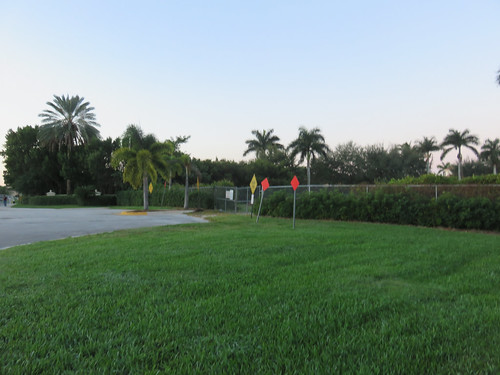
This is the view looking back down the road before sunrise:
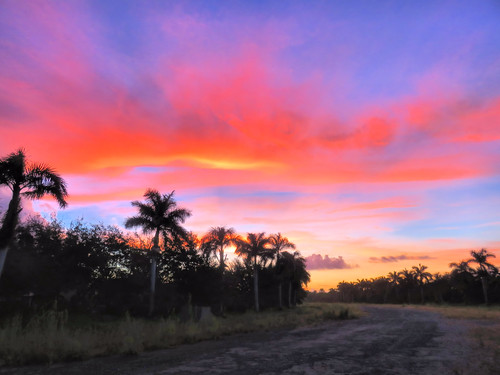
View of the lake on a murky morning this week, just before sunrise:
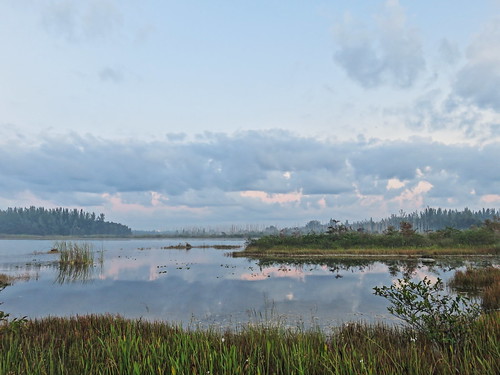
This past year our Homeowners Association planted hedges of Firebush (Hamelia patens), a most welcome innovation. Their blooms attract wintering hummingbirds and also butterflies such as this Zebra heliconian:
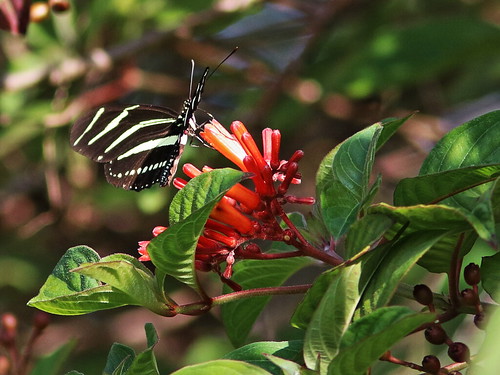
A roosting Red-shouldered Hawk strikes a characteristic pose. It appears to be deep in thought, with head gently bowed, chin to chest. Its mind must be so far off, meditating, contemplating its place in the order of nature? Might I startle it into awareness by touching its red shoulder?
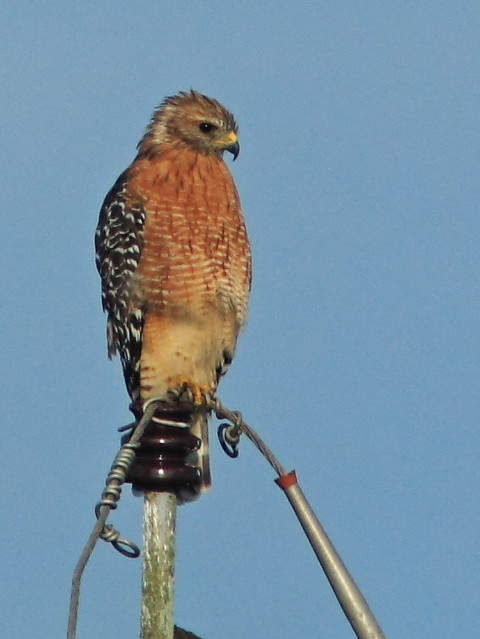
Of course, this is far from the truth. The hawk is keenly aware of the surroundings. Sharp eyes are actually watching for any scant movement which might betray the presence of a prey item, whether insect, reptile, amphibian, small mammal or bird. Immobility and stealth are essential assets for a successful hunt.
Adult Red-shouldered Hawks vary from very colorful (as above) to rather pale. Those native to Florida tend to have a sun-bleached appearance, due to genetic variation rather than the effects of UV rays:
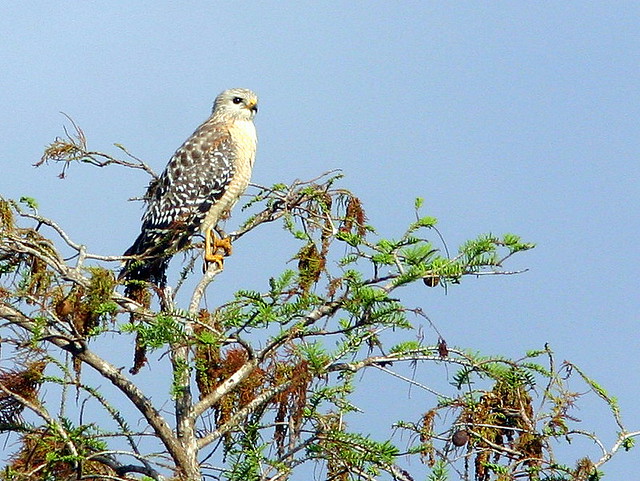
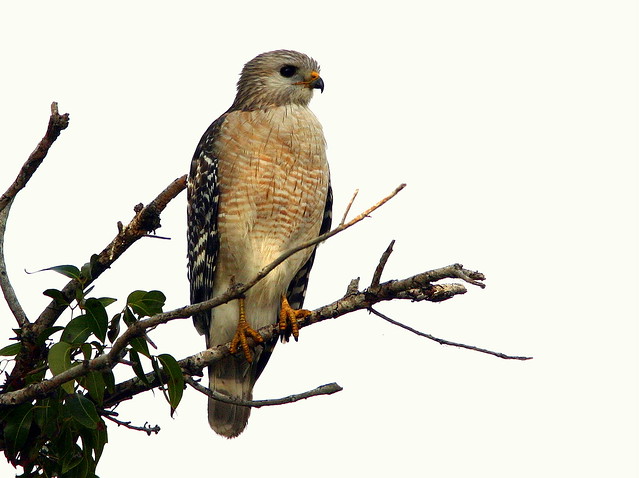
Immature Red-shouldered hawks also vary somewhat in the intensity of their streaked plumage, which they retain for about 18 months:
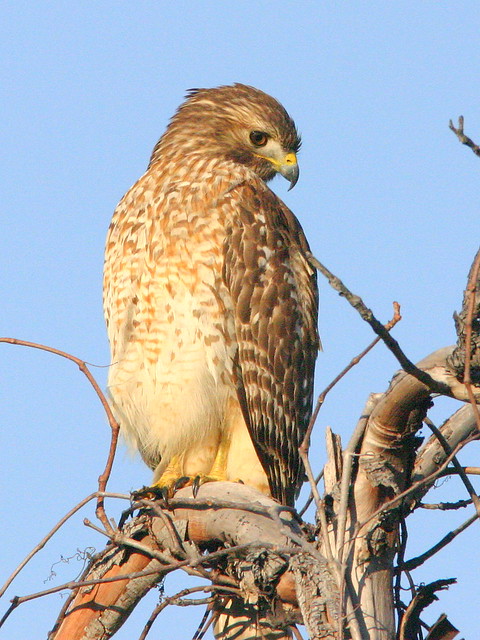
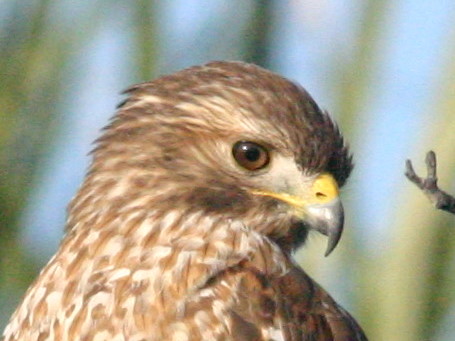
The red on the adults' shoulders shows up best in flight:
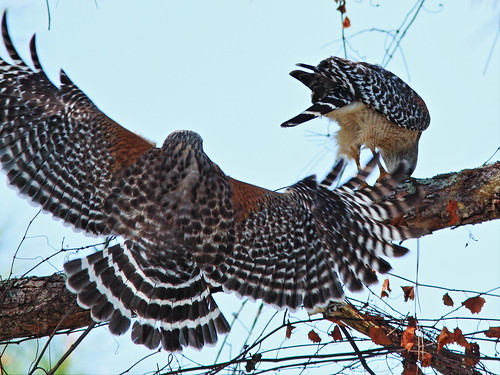
This juvenile Red-shouldered hawk exhibits a more useful identifying mark. The outer primaries are white at their base, creating a light band or "window" near its wingtips:
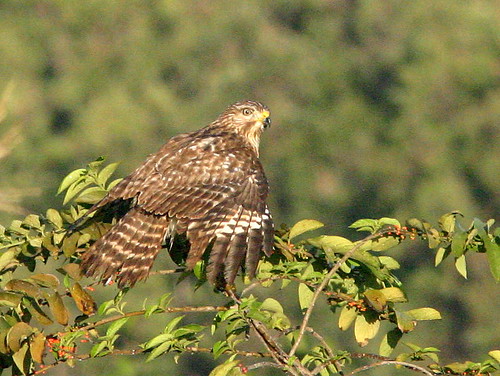
I usually hear and see one or more of this species on our morning walks in the local wetlands. This is a handsome adult bird:
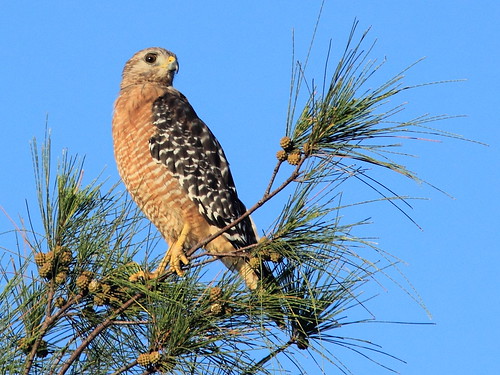
They prefer wetland habitats, and their diet varies by location. Amphibians, reptiles and invertebrates comprise about three-quarters of their prey in southern states, but studies in Quebec, Massachusetts, Wisconsin and Maryland have revealed a predominance of mammals. They also capture birds but are usually unsuccessful in such attempts.
One immature Red-shouldered Hawk currently favors an area along the entrance to our birding patch. It roosts in the tall Royal Palms along the sides of the road. Here it perches on a clump of the palm's fruit:
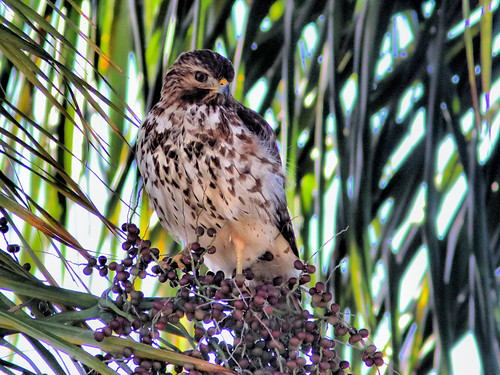
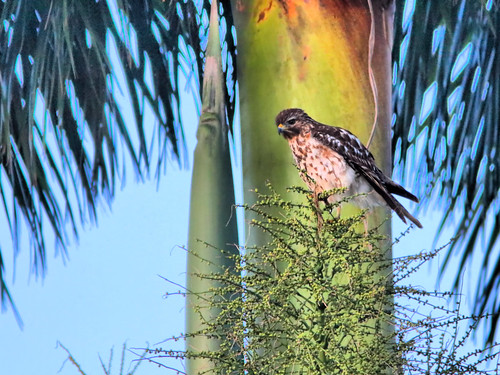

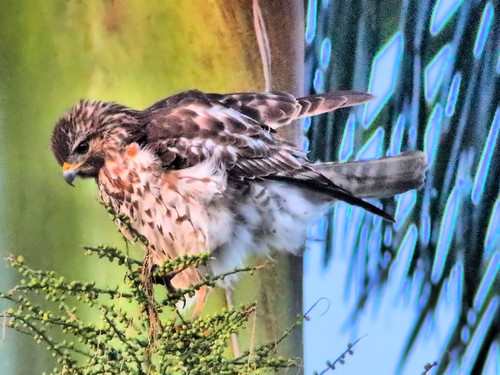
= = = = = = = = = = = = = = =
Linking to Misty's CAMERA CRITTERS,
Linking to Eileen's SATURDAY'S CRITTERS,
Linking to GOOD FENCES by Tex (Theresa).
Linking to WEEKEND REFLECTIONS by James
Linking to BirdD'Pot by Anni
Linking to Wild Bird Wednesday by Stewart
Linking to Today's Flowers Friday by Denise
Linking to Wordless Wednesday (on Tuesday) by NC Sue
________________________________________________
Please visit the links to all these memes to see some excellent photos on display
________________________________________________
An absolutely gorgeous series, Kenneth! I just love your photography!
ReplyDeleteGreat shots...love seeing hawks.
ReplyDeleteWonderful series of shots and info on these raptors, KCS.
ReplyDelete~
Incredibly beautiful nature shots of those hawks ~ thanks!
ReplyDeleteWishing you a peaceful weekend ~ ^_^
Gorgeous shots! My absolute favorite bird!
ReplyDeletemy connection wasn't as cooperative as i'd like, but i did see quite a few beautiful hawks and the opening fence. :)
ReplyDeleteVery interesting variations! Red-shouldered Hawks are quite uncommon in Ontario. Is that white one really the same species!?
ReplyDeleteoh, my. Your shots always amaze me.
ReplyDeleteBeautiful photos!
ReplyDeleteSorry to hear of your brother-in-law's death.
Terrific photos and information on the Red Shouldered Hawk. Fine post.
ReplyDeleteGorgeous pictures of the birds and a phantastic reflection
ReplyDeleteIn answer to The Furry Gnome, there are four recognized subspecies--
ReplyDeleteButeo lineatus lineatus. Breeds in the eastern and midwestern U.S. and southeastern Canada is the largest subspecies, and generally the darkest in adult plumage.
Buteo l. alleni. Breeds south of lineatus, into the northern half of Florida. Differs from nominate lineatus by smaller size and sometimes paler, gray head and back.
Buteo l. extimus. Breeds in the southern half of Florida. Smaller and paler than either lineatus or alleni.
Buteo l. elegans. Breeds in California and in Oregon west of the Cascade mountains. Differs from lineatus by smaller size, solid rufous breast, brighter
rufous shoulder patch and barring on underparts, and wider, white tail bands.
Ref: Birds of North America https://birdsna.org/Species-Account/bna/species/reshaw/systematics
Nice looking fence/gate view - Love the Palms. Wow the sunrise was stunning. The hawk was so neat. I've never seen a lighter colored one like that, so pretty.
ReplyDeleteI learned something new -- and with any luck I will remember when I see a v pale colored-shouldered. Wonderful pictures -- you have such a great neighborhood walk !
ReplyDeleteHello, awesome series on the hawks. The sky shots are beautiful. Great post.
ReplyDeleteThank you for linking up and sharing your post. Happy Saturday, enjoy your weekend!
Fantastic shots of hawks. So sweet.
ReplyDeleteI swear, Ken, this has to be one of your BEST posts. All about the hawk. And such great images, AND narrative. A++++
ReplyDeleteIt was a wonderful, so enjoyable post today. Thanks for coming by and adding your link this weekend at I'd Rather B Birdin' for us bird enthusiasts!!
quite a few TOP PHONE POLES sPRING lAKE , FL
ReplyDeleteGreat shots of these amazing birds. Aren't they gorgeous??
ReplyDeleteYour photos are exquisite.
ReplyDeleteAren't they positively gorgeous birds?
ReplyDeleteGreat shots!
Thanks for linking up at http://image-in-ing.blogspot.com/2016/11/cana.html
Thanks for the series of hawk photos.
ReplyDeleteHello Ken!:) A great series on the magnificent Red Shouldered Hawk, with informative narrative, and beautiful photos.
ReplyDeleteTrès belle série sur ces superbes oiseaux ;-)
ReplyDeleteCéline & Philippe
Oh, these are remarkable hawk photos!
ReplyDelete